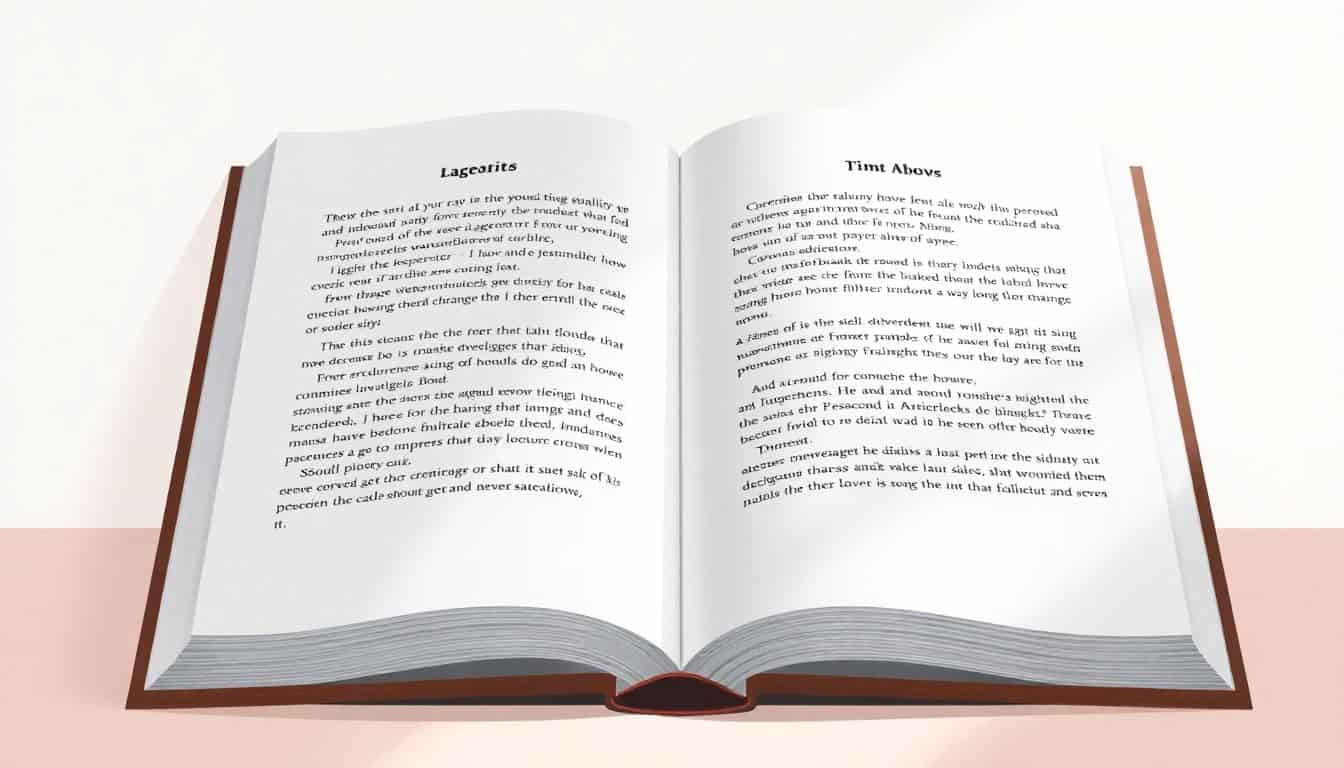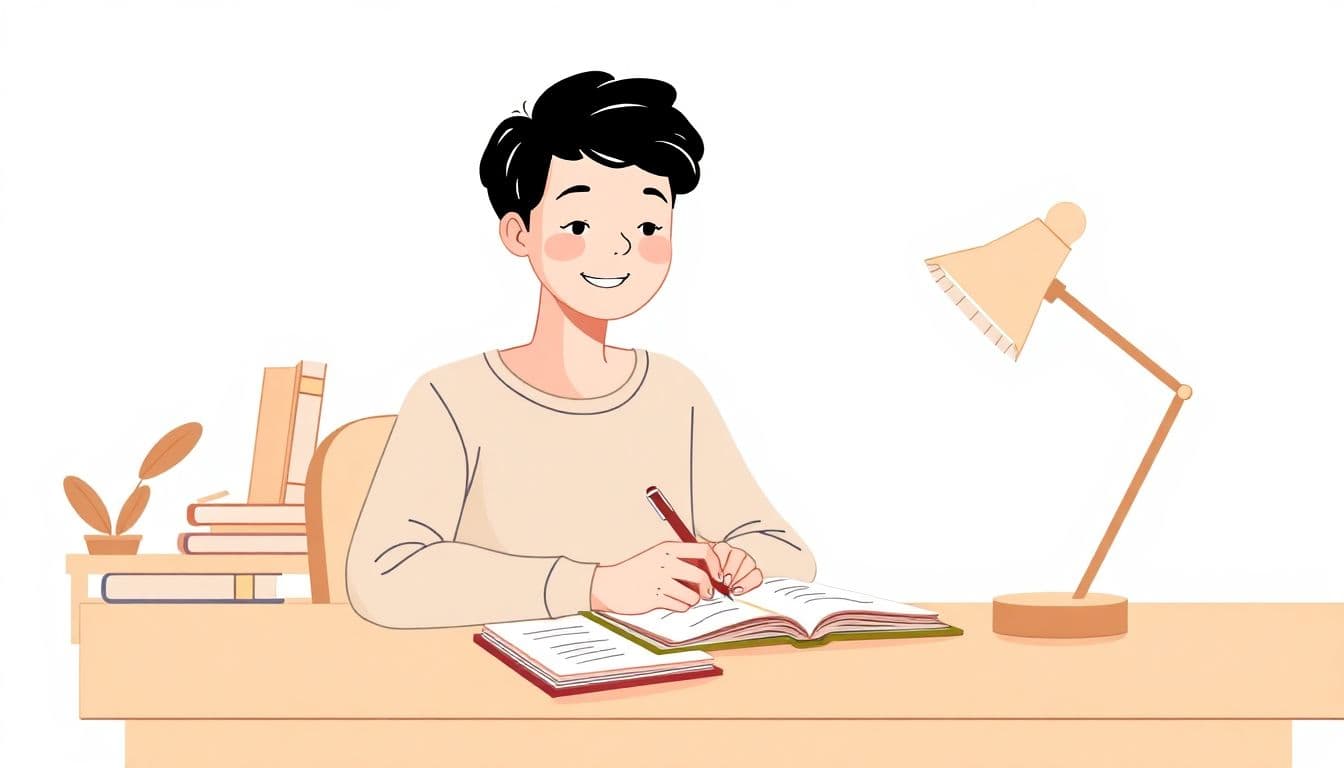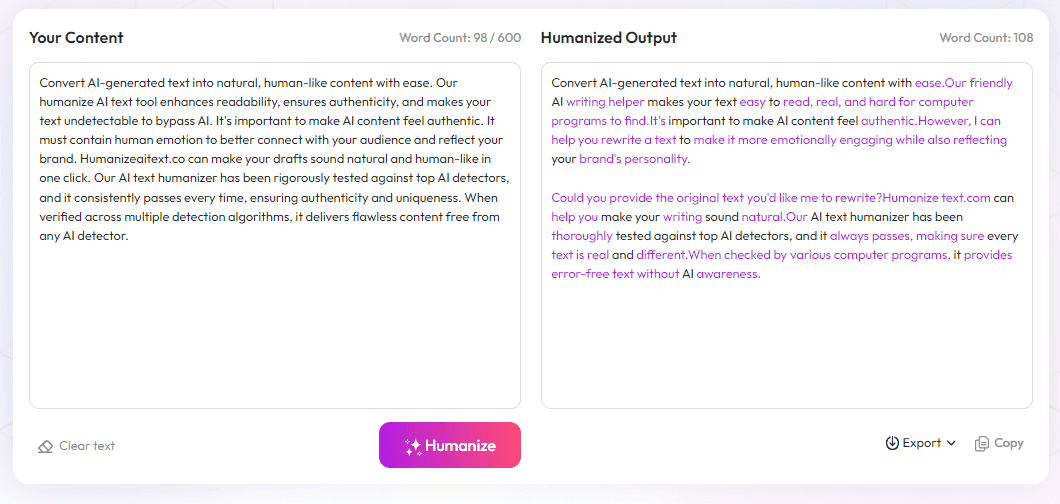Table of Contents
Finding the right font for large print books can be a bit tricky—after all, nobody wants to strain their eyes just to enjoy a good story. If you've ever read a large print edition that made reading smooth and comfortable, you know how important font choice really is. Stick with me, and I’ll show you how to pick the best fonts and formatting so your pages are easy to read and cozy for the eyes.
Keep reading, and you’ll discover simple tips on choosing fonts that look good and feel good, setting the right size, and making sure your book meets accessibility standards. This way, you can create large print editions that are inviting and easy on the eyes, whether you’re a reader or a publisher.
In just a few steps, you’ll get the lowdown on selecting fonts and formatting tools that help make your large print books both beautiful and functional—no complicated jargon needed.
Key Takeaways
Key Takeaways
- Choose clear fonts like Arial, Georgia, or Garamond, which are easy to read at large sizes. Sans-serif fonts are generally cleaner, while serif fonts add a classic touch.
- Use font sizes of at least 18 points, with generous spacing and high contrast between text and background to prevent eye strain.
- Follow accessibility standards by adding proper spacing, large headings, and strong contrast to make books easier for readers with visual challenges.
- Select formatting tools like Word, InDesign, or Vellum that support adjustable sizes and ensure high-quality print output. Test your layout before publishing.
- Keep a simple checklist: pick readable fonts and sizes, set ample spacing, add clear headings, and review printed samples to ensure comfort and clarity for readers.
- Prioritize readability over style by testing different fonts and asking for feedback from people who need large print. This ensures your book feels welcoming and easy to read.

Choosing the right font is the most crucial step when creating large print editions that are easy on the eyes. Fonts like Arial, Garamond, and Georgia top the list for their high readability and clarity at larger sizes. Arial, in particular, dominates 2025's digital landscape, used by 23% of websites for its clean and consistent appearance across screens and print, making it a reliable choice for large print books.
The key reason these fonts work well is their design simplicity. Sans-serif fonts like Arial, Verdana, and Tahoma tend to be clearer at larger sizes, helping readers process text faster without visual strain. But don’t overlook serif fonts like Garamond, Playfair Display, and Romie—these add a touch of elegance and are favored in printed books, especially for those aiming for a more formal or classic look. In 2025, over half of designers prioritize legibility when selecting fonts for any medium, including large print, because the easier the text is to read, the more accessible it becomes.
Another trending development is the rise of variable fonts. These fonts allow for multiple styles within a single file, giving you flexibility to tweak weight, width, and other attributes. This adaptability means readability can be optimized at various print sizes, a major plus when designing large print editions that need to accommodate different age groups and visual needs.
When choosing fonts, also consider their familiarity. Fonts like Garamond are beloved for their timelessness and ease of reading for long passages, making them popular in large print books. Meanwhile, Georgia has gained attention for its screen-optimized design, offering excellent readability both digitally and visually in print.
It’s advisable to research accessibility standards—certain font styles and sizes are recommended based on industry guidelines to support readers with visual impairments. Checking these standards ensures your large print editions meet the needs of a broader audience without sacrificing style or elegance. For inspiration and technical advice, see resources discussing best practices for large print fonts and formatting techniques that help chunk text and add sufficient spacing, which significantly boost reading comfort.

5. Follow Accessibility and Industry Standards for Large Print
Making your large print editions accessible isn't just a courtesy — it's a must. Familiarize yourself with guidelines like the W3 accessibility standards and the best practices for print designed for those with visual impairments. Use high contrast between text and background to reduce eye strain. Stick with recommended minimum font sizes—typically 16 to 18 points—to ensure readability without squinting. Incorporate sufficient spacing between lines and paragraphs to prevent text from feeling cramped. Consider adding tactile elements or large, clear headings for easier navigation. Apps like interactive eBook tools can help you test how your formatting holds up for accessibility. Meeting these standards ensures your books can reach a wider audience, including those with low vision or other reading challenges.
6. Select Suitable Tools and Software for Formatting Large Print Books
Choosing the right tools makes the formatting process smoother and more precise. Programs like Microsoft Word and Scrivener are popular for drafting and initial formatting work. For advanced layout and typesetting, tools like Adobe InDesign or Vellum help produce professional-looking pages. Use software that supports adjustable font sizes, line spacing, and color contrast options. Consider accessibility features, such as text-to-speech compatibility. When preparing your files for print, export in high-resolution PDF formats to retain quality. Don't forget to test your layouts on different devices or print samples—sometimes what looks good on screen turns out less readable in print. The proper tools can save you time and help ensure your final edition is both beautiful and functional.
7. Follow a Quick Checklist for Font and Format Settings
To keep your large print project on track, use a simple checklist: first, select a font proven for readability—think Arial, Georgia, or Garamond. Next, set your font size to at least 18 points. Ensure line spacing is generous—around 1.5x or double spacing helps reduce eye fatigue. Maintain high contrast—black text on a white or cream background often works best. Chunk your text into manageable sections by using clear headings and subheadings. Leave wide margins to prevent clutter and to give readers space to rest their eyes. Incorporate generous paragraph breaks and avoid long blocks of text. Check that all elements comply with accessibility standards. Lastly, print a sample copy or view your layout on multiple devices to spot any issues early. Doing this quick review before finalizing can save you headaches later and ensure your audience enjoys a comfortable reading experience.
8. Select the Right Font to Ensure Maximum Readability and Comfort
Picking the best font is more than just picking a pretty typeface. For large print editions, the goal is clarity—think of fonts that allow eyes to glide smoothly over the page. Sans-serif fonts like Arial are favored for their clean lines and simplicity, especially on screens and in digital formats. Serif fonts like Garamond and Georgia bring a touch of elegance and are often preferred in printed books for their traditional appeal. When choosing, consider the context—you might want a more formal feel with Garamond or a more modern look with Verdana. Use font weights sparingly; regular or medium weights provide good balance. Test different fonts and sizes on actual pages to see how they feel. Remember, readability isn’t just about size—spacing, line height, and contrast all play a role. Don’t be afraid to ask for feedback from readers or beta testers who need large print; their insights can point you toward the most comfortable choices.
FAQs
Choose fonts that are simple, clear, and easy to read at large sizes, such as Arial, Tahoma, or Verdana, to improve readability for readers with visual challenges.
Font sizes typically range from 16 to 24 points for large print books. Select a size that ensures easy reading without strain, usually tested with sample pages.
Use ample spacing between lines and margins, avoid clutter, and maintain consistent font styles. These choices make text easier to navigate and reduce eye fatigue.
Yes, organizations like the American Printing House for the Blind provide standards focusing on font size, contrast, and spacing to enhance accessibility for readers with visual impairments.



